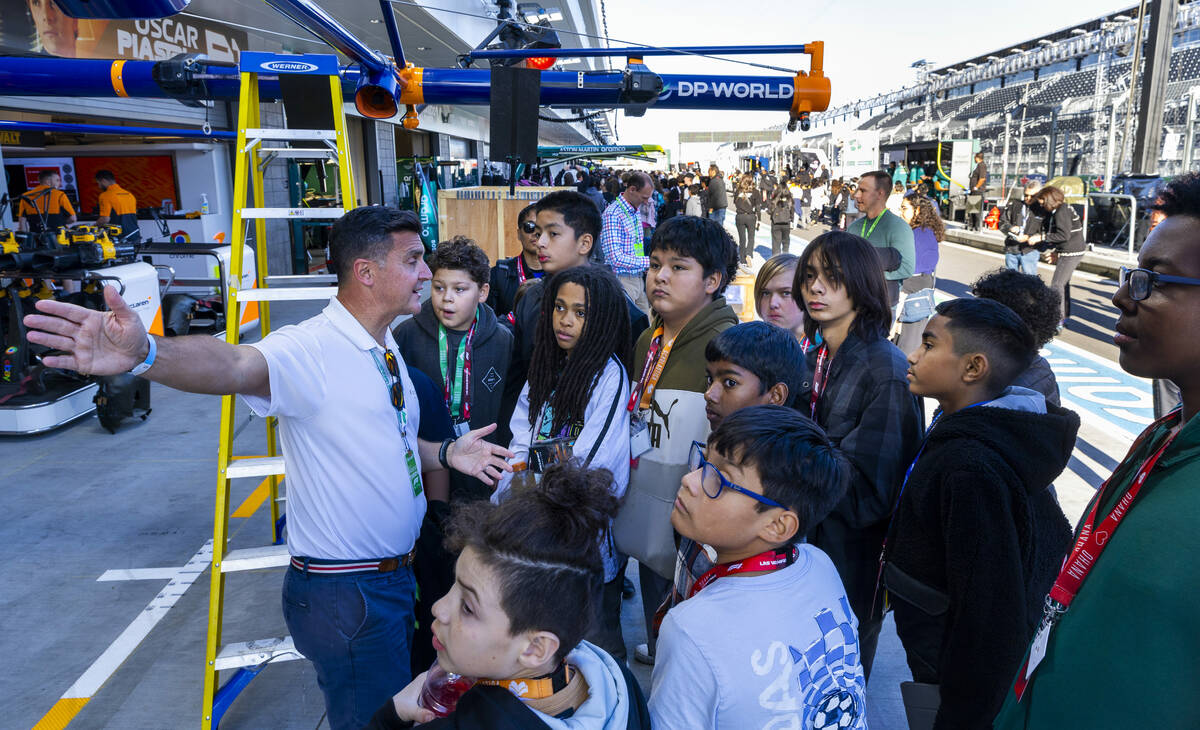Las Vegas Grand Prix gives CCSD students an education on race experience

Las Vegas Grand Prix officials gave 500 Clark County School District students a look at how their learning in the classroom could apply in the real world.
Hundreds of middle school kids got a tour of the Formula One pit building, discovering how each F1 team uses STEM learning in team garages as teams ready race cars for the weekend race.
Groups took turns walking the pit lane outside of the building, viewing work going on in each driver’s garage, including those of Max Verstappen, Lando Norris and Lewis Hamilton, while hosts offered insight into how science, technology, engineering and mathematics (STEM) play a big role in each team’s success.
The event is part of the Las Vegas Grand Prix’s effort to increase opportunities for Las Vegas community involvement in this year’s race, after the push to get the race track and pit building up and running last year limited such opportunities.
“One of our priorities was education,” Las Vegas Grand Prix CEO Renee Wilm said of Wednesday’s event. “Showing them where their education could take them, all in the environment that is race week, is a great opportunity. We’ve learned better how to integrate with the community, while causing less disruption.”
Race and CCSD officials hope the experience opens students’ eyes to what is possible once they are done with their academic careers.
“Mechanics, engineers, software designers, all of it,” Wilm said. “We’re looking to inspire the next generation and to be able to participate in their educational training and let them see firsthand what the application of math and science can be when they grow up.”
Because the kids included in the tour were all involved in STEM learning, CCSD spokeswoman Melinda Malone said it was the perfect opportunity to bring in the youth of the area and give them a glimpse of what’s going on in their backyard. When Las Vegas Grand Prix officials approached district officials about the opportunity, they were excited to accept the invitation.
“To see how that (STEM learning) transfers and translates into actual careers is inspiring for them,” Malone said. “This is something they can look up to and add to their career goals.”
For Eric Vizcarra, a seventh grader at O’Callaghan Middle School in Las Vegas, the opportunity was eye-opening, allowing him to see just what goes into F1, beyond the actual racing on the track.
“It’s just taking science and math and combining it, then turning it into driving and a sport,” Vizcarra said. “I did not know it (a pit stop) could be as fast as two seconds. That’s fast.”
When Vizcarra said that once he is back in the classroom learning math and science, he said he is going to remember back to this behind-the-scenes tour and know that what he learns won’t be useless in the future and that there’s a practical use for the education he’s getting. The F1 experience is also leaving him more of a racing fan than he was before.
“At first when I heard about Formula One I didn’t think it to be as serious of a sport, as some people said it was,” Vizcarra said. “But now I see there is a lot of work that goes into it.”
Contact Mick Akers at makers@reviewjournal.com or 702-387-2920. Follow @mickakers on X.